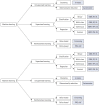Artificial intelligence in perioperative medicine: a narrative review
- PMID: 35345305
- PMCID: PMC9171545
- DOI: 10.4097/kja.22157
Artificial intelligence in perioperative medicine: a narrative review
Abstract
Recent advancements in artificial intelligence (AI) techniques have enabled the development of accurate prediction models using clinical big data. AI models for perioperative risk stratification, intraoperative event prediction, biosignal analyses, and intensive care medicine have been developed in the field of perioperative medicine. Some of these models have been validated using external datasets and randomized controlled trials. Once these models are implemented in electronic health record systems or software medical devices, they could help anesthesiologists improve clinical outcomes by accurately predicting complications and suggesting optimal treatment strategies in real-time. This review provides an overview of the AI techniques used in perioperative medicine and a summary of the studies that have been published using these techniques. Understanding these techniques will aid in their appropriate application in clinical practice.
Keywords: Artificial intelligence; Deep learning; Machine learning; Outcome assessment; Perioperative care; Risk assessment..
Conflict of interest statement
No potential conflict of interest relevant to this article was reported.
Figures

References
-
- Topol EJ. High-performance medicine: the convergence of human and artificial intelligence. Nat Med. 2019;25:44–56. - PubMed
-
- Salto-Tellez M, Maxwell P, Hamilton P. Artificial intelligence-the third revolution in pathology. Histopathology. 2019;74:372–6. - PubMed
-
- Johnson KW, Torres Soto J, Glicksberg BS, Shameer K, Miotto R, Ali M, et al. Artificial intelligence in cardiology. J Am Coll Cardiol. 2018;71:2668–79. - PubMed
Publication types
MeSH terms
LinkOut - more resources
Full Text Sources

